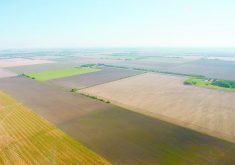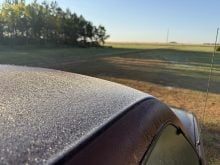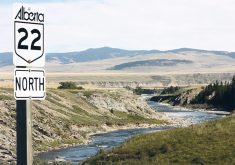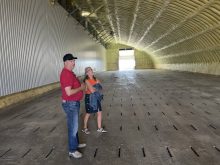It is far-fetched to suggest Iceland’s recent volcanic eruption could cause a European crop failure, say weather and geology experts.
Various newspaper reports have mentioned a precedent for Icelandic volcanoes wreaking havoc on crop production and suggested it could happen again.
A story in the British newspaper The Guardian points to the Laki volcanic eruption, which occurred in southern Iceland in 1783 and lasted for eight months.
The eruption caused widespread crop failure when combined with an abnormally hot summer.
Read Also

Sustainable food has ‘lost all meaning’: prof
That marketing strategy is deader than a doornail, says a University of Guelph professor who specializes in consumer preferences and perceptions of agriculture and food.
It is credited with causing famine as far away as Egypt, and some environmental historians believe it prompted lingering food shortages in northern Europe that helped spark the French revolution of 1789.
Other articles suggest the April 15 eruption of Iceland’s Eyjafjallajokull volcano could similarly affect European crop yields this summer.
However, two experts have debunked that idea.
“This volcano is much smaller than those that have been capable of changing world weather patterns,” said Drew Lerner, president of World Weather Inc.
“The bottom line is that I don’t think it’s going to have much of an impact.”
Marcus Bursik, professor of geology at the University of Buffalo, concurs. He said the only way a volcano could have that type of impact is if it spewed a massive amount of ash high enough into the air that it reached the stratosphere and blocked out the sun.
Eyjafjallajokull hasn’t released enough particulate matter with enough explosive power to do that.
“The effect so far is very minimal,” Bursik said.
Lerner said when Eyjafjallajokull first erupted, the ash plume reached a maximum height of almost 10 kilometres. Since then, the ash heights have been three to 8.6 km.
By contrast, when Mount Pinatubo blew in June 1991, the ash cloud soared 35 km into the atmosphere and cooled the planet by 0.4 to 0.6 C.
Lerner said Iceland’s latest volcanic eruption won’t likely have a long-term impact on world weather patterns and crop yields.
“It is highly doubtful that anything more than enriched sunsets and sunrises will come out of this eruption,” he said.
Bursik said the only way the eruption could result in widespread crop damage outside of Iceland is if it continued for a year or more and started pumping ash higher into the atmosphere.
That’s what happened with the 1783 Laki eruption, which lasted eight months.
“This is not comparable at all.”
Bursik also cast doubt on the link between the Laki eruption and the subsequent crop failure in Europe. It’s true that both events occurred, he said, but it is difficult to draw a scientific correlation between the two.
“The problem is the cause and effect between those gets sticky.”

















